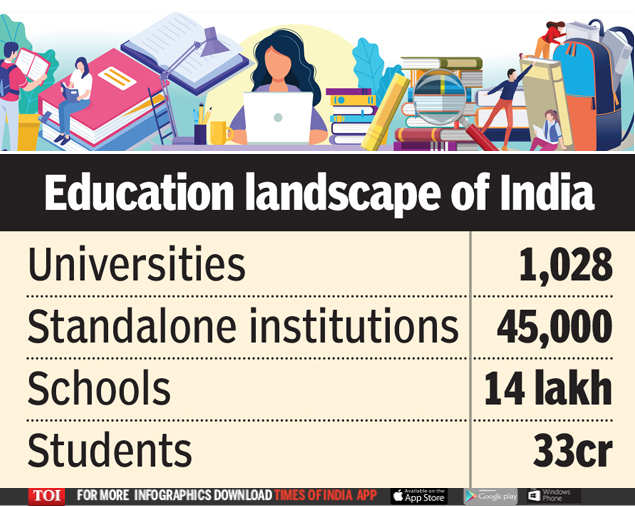India gets new education policy after 34 years

NEW DELHI: On Wednesday, the government unveiled the new National Education Policy (NEP) that introduced several changes in Indian education system-from school to college level. The new policy comes after a period of three decades. The cabinet also renamed the Ministry of Human Resource and Development (MHRD) as the Ministry of Education. A look at the outcomes of National Education Policy 2020.
SCHOOL EDUCATION
➤Universalisation of Early Childhood Care Education for 3-6 years age bracket.
➤Foundational Stage covering ages 3-8; Preparatory Stage covering ages 8-11; Middle Stage covering ages 11-14; Secondary Stage covering ages 14-18.
➤Wherever possible, the medium of instruction until at least Class V, but preferably till Class VIII & beyond, will be the home language/mother tongue/local language/ regional language.
➤Beginning with mathematics, all subjects could be offered at two levels.
HIGHER EDUCATION
To be restructured, made multidisciplinary
➤ By 2040, all higher education institutions to become multidisciplinary institutions.
➤ To increase Gross Enrolment Ratio in higher education, including vocational education, from 26.3% (2018) to 50% by 2035.
➤ Autonomous degree-granting colleges that would grant undergraduate degrees with independent board of governors; colleges will be able to grant degrees without university affiliation.
➤ The UG degree will be of either 3 or 4-year duration, with multiple exit options.
Internationalisation
➤ High-performing Indian universities will be encouraged to set up campuses in other countries.
➤ Selected universities from among the top 100 universities in the world will be facilitated to operate in India.
➤ Four independent verticals within one umbrella regulator — HRead More – Source
[contf] [contfnew] ![]()
times of india
[contfnewc] [contfnewc]



